 When it comes to modern cooking technology, two of the most advanced and energy-efficient cooktops available today are infrared and induction. Choosing the right cooktop can transform your whole cooking experience, offering faster cooking times, energy efficiency, and sleek designs that advance any kitchen space.
When it comes to modern cooking technology, two of the most advanced and energy-efficient cooktops available today are infrared and induction. Choosing the right cooktop can transform your whole cooking experience, offering faster cooking times, energy efficiency, and sleek designs that advance any kitchen space.
However, choosing between them can be challenging, as each comes with unique advantages and potential drawbacks. However, selecting between infrared and induction cooktops can be challenging, as each has unique advantages and potential drawbacks.
In this guide, we’ll compare these two cooktop types in terms of performance, efficiency, safety, and overall usability to help you make an informed decision.
Infrared Cooktops
Infrared cooktops utilize radiant heating technology to cook food. They rely on electric or halogen elements that produce infrared radiation to transfer heat directly to the cookware. This method ensures efficient and even heating across the cooking surface.
The heat emitted can reach higher temperatures quickly, making infrared cooktops suitable for various cooking styles, such as searing or frying.
Some key characteristics of infrared cooktops include:
-
Compatibility with all cookware types: These cooktops work with materials like stainless steel, cast iron, aluminium, or even glass.
-
Fast heating capabilities: Infrared heat travels directly to the cookware without needing intermediate heat transfer.
-
Visible heat zones: Users can often see the glowing red surface, providing a visual cue of the cooktop’s activity.
However, the visible heat zone can remain hot for some time after use, requiring careful handling.
Induction Cooktops
Induction cooktops operate using electromagnetic energy to directly heat the cookware. This energy is generated through a coil beneath the surface of the cooktop, creating a magnetic field that induces heat production in ferromagnetic cookware.
Heat is localized to the cookware, leaving the surrounding surface cool to the touch. The Key attributes of induction cooktops include:
-
Only compatible with magnetic cookware: Examples include cast iron and specific grades of stainless steel.
-
Exceptional energy efficiency: Since the heat is directly generated in the cookware, minimal energy is wasted.
-
Precise temperature control: Cooking can be adjusted with high accuracy, catering to complex recipes.
Both technologies bring unique advantages to the kitchen, but their differing operational principles are noteworthy. Understanding these basics is essential for making an informed decision that aligns with individual cooking habits and preferences.
Infrared vs Induction Cooktop: Which One Is For You?
Understanding the difference between infrared and induction cooktops can help in choosing the right one for your kitchen. While both offer modern, efficient cooking, they operate in fundamentally different ways. Induction relies on electromagnetic fields for direct heating, whereas infrared uses radiant heat from halogen or ceramic elements.
|
Feature |
Induction Cooktop |
Infrared Cooktop |
|
Heating Method |
Electromagnetic field heats the cookware directly |
Radiant heat from halogen lamps or ceramic elements |
|
Cookware Compatibility |
Requires ferrous (magnetic) cookware like cast iron or stainless steel |
Compatible with all cookware types |
|
Efficiency |
Highly efficient; minimal heat loss |
Less efficient; more heat dispersion |
|
Temperature Control |
Instant, precise adjustments |
Slower response due to residual heat |
|
Cooling Time |
Cools quickly after use |
Takes longer to cool, higher burn risk |
|
Safety |
The surface stays relatively cool; safer for households |
The hot surface remains after cooking |
|
Heat Distribution |
Focused heat; minimal impact on room temperature |
Heats surrounding area significantly |
Which One Should You Choose? If you prioritize efficiency, precision, and safety, an induction cooktop is the better choice.
However, if you want versatility with cookware and a more budget-friendly option, an infrared cooktop might suit your needs. Consider your cooking habits and kitchen setup to make the best decision.
Energy Efficiency: Which Cooktop Saves More Power?
When comparing infrared and induction cooktops, energy efficiency plays an important role in deciding the best cooktop for home. Both operate on electricity, but their heat transfer methods differ, impacting power consumption.
Induction cooktops are among the most energy-efficient cooktops, transferring 85-90% of energy directly to the cookware through electromagnetic fields. This minimizes heat loss, ensures fast heating stoves, and shortens cooking times.
However, they require the best cookware for induction cooktops—magnetic pots and pans—to function optimally.
Infrared cooktops, using halogen infrared cooking or metal coil elements beneath a ceramic surface, achieve 65-75% efficiency. Some energy escapes into the air due to indirect heating, making them slightly less efficient. Infrared stove heating technology also results in slower cooling, increasing residual heat loss.
Induction vs Infrared Stove: Which is More Efficient?
For those prioritizing energy-efficient cooktops, induction cooking is the better choice due to its direct heating, minimal energy waste, and faster performance. Meanwhile, infrared burners and electric burners remain solid alternatives for versatile cookware use and affordability.
If efficiency, speed, and cost savings matter most, an induction cooktop is the best cooktop for home.

Cooking Performance: Speed, Heat Control, and Versatility
When choosing between an infrared and induction cooktop, performance matters. Let’s break it down:
-
Speed: Induction cooktops heat cookware directly using electromagnetic energy, cutting cooking time significantly. Boiling water takes just minutes! Infrared stove heating technology, on the other hand, uses radiant heat, making it slightly slower but still faster than traditional stoves.
-
Heat Control: Induction cooktops offer instant, precise temperature adjustments, perfect for delicate tasks like melting chocolate. Infrared cooktops also provide good control, but the heat transfer delay can impact precision.
-
Versatility: Infrared cooktops work with all cookware, including ceramic, glass, and aluminium, while induction cooktops require magnetic pots like stainless steel or cast iron.
For speed and precision, induction wins. If cookware flexibility is your priority, infrared is a solid choice. Choose based on what suits your cooking style best!

Safety Features: Infrared vs Induction for a Safer Kitchen
When choosing between an infrared and induction cooktop, safety plays an essential role. Both technologies incorporate safety measures, but they function differently, impacting how users interact with them.
Infrared Cooktops: High Heat Retention
Infrared cooktops rely on infrared stove heating technology, emitting radiant heat to warm cookware. While effective, they retain heat long after being turned off, increasing the risk of burns.
Many models include residual heat indicators, warning users when the surface is still hot. Additionally, objects left on an infrared cooktop can accidentally heat up, posing potential hazards in a busy kitchen.
On the plus side, infrared cooktops work with all cookware materials, including glass, ceramic, and aluminium, offering flexibility that induction models lack. However, their prolonged cooling time requires extra caution.
Induction Cooktops: Cool Surface, Smart Protection
Induction cooktops use electromagnetic energy to heat cookware directly, keeping the cooktop itself relatively cool. This significantly reduces burn risks. Many models feature auto-shutoff functions, turning off if no compatible cookware is detected.
Additionally, they offer overheat protection, ensuring the system doesn’t exceed safe temperature levels.
One safety requirement of induction cooking is the need for ferromagnetic cookware, such as stainless steel or cast iron. Non-magnetic materials won’t heat up, preventing accidental activation but also limiting cookware options.
Which Cooktop Is Safer?
Induction cooktops offer better safety control due to their cool surface, automatic shutoff, and overheating protection. Infrared models, while still safe with proper precautions, require more attentiveness due to heat retention. Choosing between the two depends on whether you prioritize versatility or enhanced safety features in your kitchen.
Maintenance and Durability: Cleaning and Long-Term Use
When choosing the best cooktop for home, maintenance and durability play an important role. Both infrared and induction cooktops offer easy cleaning and long-lasting performance, but their upkeep and wear resistance vary.
Cleaning: Effortless vs. Residual Heat Challenges
Both cooktops feature smooth glass-ceramic surfaces, but cleaning differs due to heat retention. Infrared cooktops generate high residual heat, causing spills to bake onto the surface. This often requires a ceramic cooktop scraper or specialized cleaner.
In contrast, induction cooktops remain cooler, preventing spills from burning onto the surface. A simple wipe with a damp cloth is usually enough, making them easier to maintain. However, both cooktops should be cleaned with non-abrasive materials to avoid scratches.
Durability: Heat Exposure vs. Impact Sensitivity
Infrared cooktops handle high temperatures well but may experience discolouration or surface wear over time. Heavy cookware can also stress the glass, increasing the risk of cracks.
Induction cooktops, while highly durable, rely on precise electromagnetism. Damage to the glass from heavy impacts can impair functionality, making proper cookware handling essential. Using the best cookware for induction cooktops, such as flat-bottomed stainless steel or cast iron, helps maintain longevity.
Both cooktops are designed for long-term use, but induction cooktops offer easier cleaning, while infrared cooktops handle heat exposure better. Choosing the right one depends on individual kitchen habits and maintenance preferences.

Cooking Preferences: Which Cooktop Suits Different Cooking Styles?
Selecting the right cooktop largely depends on individual cooking preferences and the techniques most frequently employed in the kitchen. Both infrared and induction cooktops offer unique benefits tailored to specific cooking styles, making it crucial to understand their strengths.
Infrared Cooktops: For Adaptable and Traditional Cooking
Infrared cooktops excel in providing consistent, radiant heat that mimics traditional gas burners. They suit cooking methods requiring steady high temperatures, such as:
-
Searing and Stir-Frying: The even heat distribution ensures impeccable browning and quick cooking, ideal for stir-fried dishes or achieving a perfect sear on steaks.
-
Simmering and Slow Cooking: Infrared cooktop has the ability to maintain low, stable heat levels making it suitable for simmering sauces or slow-cooking recipes where precision isn’t as critical.
-
Broiling and Baking: The radiant heat can closely replicate broiler or oven effects, making it useful for finishing gratins or baking flatbreads in certain cookware.
Additionally, infrared cooktops work with most types of cookware, giving home cooks the flexibility to use materials like ceramic, aluminium, or stainless steel.
Induction Cooktops: For Precision and Speed
Induction cooktops cater to modern cooking needs, particularly those prioritizing efficiency and precision. They are especially advantageous for:
-
Quick Boiling and Rapid Heating: Induction’s electromagnetic technology transfers energy directly to compatible cookware, significantly reducing the time needed to boil water or preheat pans.
-
Delicate Recipes: The precise temperature control allows flawless cooking of delicate dishes like custards, sauces, or chocolate melting without risk of burning.
-
High-Energy Techniques: Highly efficient heat transfer provides instant temperature adjustments, making tasks like wok cooking fast and responsive.
However, induction cooktops require compatible cookware with magnetic properties, such as cast iron or specific grades of stainless steel, which may be a limiting factor for some users.
Understanding these distinctions clarifies which cooktop best complements specific cooking styles.
Pros and Cons of Induction Cooktops
Induction cooktops have revolutionized modern kitchens with their advanced technology and sleek functionality. However, like any appliance, they come with advantages and limitations that consumers must consider.
Pros of Induction Cooktops:
-
Energy Efficiency: Induction cooktops offer exceptional energy efficiency by directly transferring heat to compatible cookware, minimizing energy loss and reducing cooking times.
-
Rapid Heating: These cooktops reach desired temperatures faster than traditional gas or electric models, making them ideal for quick meal preparation.
-
Precise Temperature Control: The responsiveness of induction technology allows for precise adjustments, essential for delicate recipes requiring specific heat levels.
-
Safety Features: Induction cooktops remain cool to the touch, reducing the risk of accidental burns. Additionally, most models include safety features, such as automatic shut-off, child locks, and spill detection.
-
Easy Maintenance: The flat, smooth surface simplifies cleaning, as spills do not bake onto the surface due to the lack of residual heat. Modern Aesthetic: With their minimalist and sleek design, induction cooktops enhance the aesthetic appeal of contemporary kitchens.
Cons of Induction Cooktops:
-
Cookware Compatibility: Induction cooktops require ferromagnetic cookware, meaning non-magnetic pots and pans, such as aluminium or glass, are unsuitable without additional tools like induction disk adapters.
-
Higher Initial Cost: The advanced technology comes at a premium price, making induction cooktops an expensive upfront investment compared to gas or traditional electric alternatives.
-
Electricity Dependence: Unlike gas stoves, induction units rely entirely on electricity, which can be inconvenient during power outages.
-
Noise Generation: Some users may notice a faint humming or buzzing sound during operation, especially at higher power settings or with certain types of cookware.
-
Learning Curve: For individuals switching from gas or electric stoves, there may be a period of adjustment to understand and fully utilize the features of an induction cooktop.
While induction cooktops provide innovative and energy-efficient cooking experiences, their unique requirements and limitations demand thorough evaluation based on individual needs and preferences.
Conclusion: Infrared vs Induction Choosing the Best for Your Kitchen
When choosing between an infrared and an induction cooktop, consider your priorities. Infrared cooktops offer affordability, broad cookware compatibility, and high heat efficiency, making them a practical choice for versatility and simplicity.
Induction cooktops, with their precise temperature control, energy efficiency, and advanced safety features, are ideal for modern kitchens. The right choice depends on your cooking habits, budget, and need for efficiency.
Ready to upgrade your kitchen? Explore our best cooktop options that match your cooking style and needs!

Frequently Asked Questions
What is the main difference between infrared and induction cooktops?
The primary distinction lies in how they generate heat. Infrared cooktops use radiation from halogen lamps or ceramic heating elements to produce heat directly on the cookware’s surface. Induction cooktops use electromagnetic energy to heat the cookware, requiring specific magnetic materials such as cast iron or stainless steel.
Can all types of cookware be used on infrared and induction cooktops?
Infrared cooktops are compatible with a wide range of cookware, including glass, aluminium, and stainless steel. Induction cooktops are more restrictive, as their electromagnetic mechanism requires cookware that is magnetic and has a flat, smooth base. Non-magnetic materials like aluminium or glass will not work with an induction cooktop unless they have a magnetic base layer.
Which type of cooktop heats food faster?
Induction cooktops generally heat food faster due to their ability to transfer heat directly to the cookware with minimal energy loss. Infrared cooktops heat slower in comparison, as they rely on radiant heat to warm the cookware and the surrounding area.
Infrared vs induction cooktops: which are more energy-efficient cooktops?
Induction cooktops are considered more energy-efficient because they transfer almost all the energy to the cooking vessel without significant heat loss. Infrared cooktops, while still efficient compared to traditional electric cooktops, lose more heat to the surrounding environment.
Which cooktop is easier to clean?
Both infrared and induction cooktops have flat surfaces, making them easier to clean than gas stoves. However, induction cooktops often have an advantage, as spills do not bake onto the surface since the surrounding area remains cooler during cooking.
Can infrared or induction cooktops replace a traditional gas stove?
Both types can effectively replace a gas stove for most cooking needs. However, the choice depends on user preferences, cookware compatibility, and energy considerations. Induction cooktops may be less suitable if existing cookware is non-magnetic, while infrared cooktops may not cater to those prioritizing speed and energy savings.
Are these cooktops safe for households with children?
Induction cooktops are generally safer, as their surfaces remain relatively cool and only heat the cookware. Infrared cooktops can retain residual heat for a while after use, requiring caution to prevent burns. Both options have safety features like automatic shut-offs for added protection.



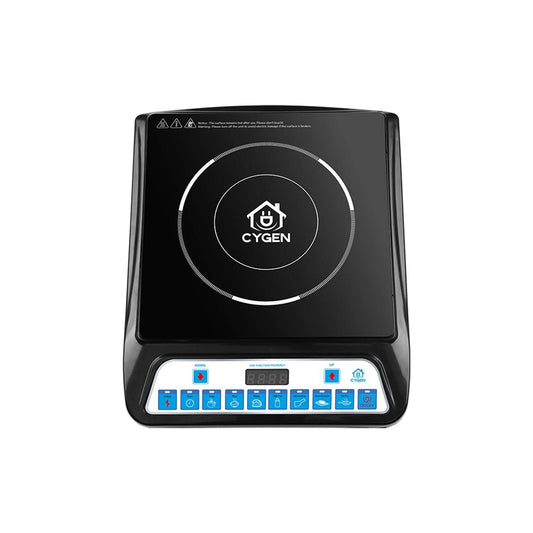
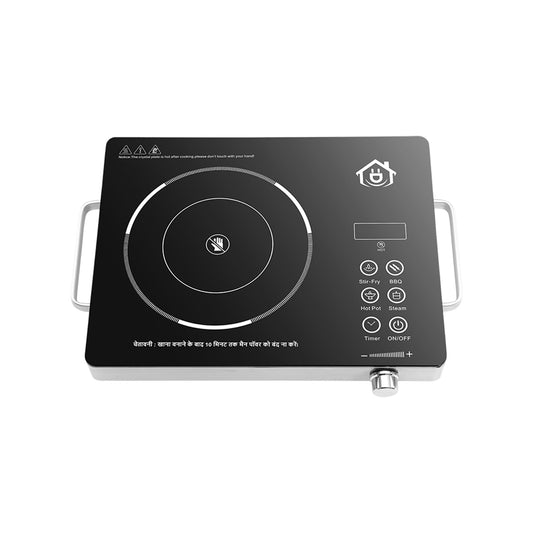
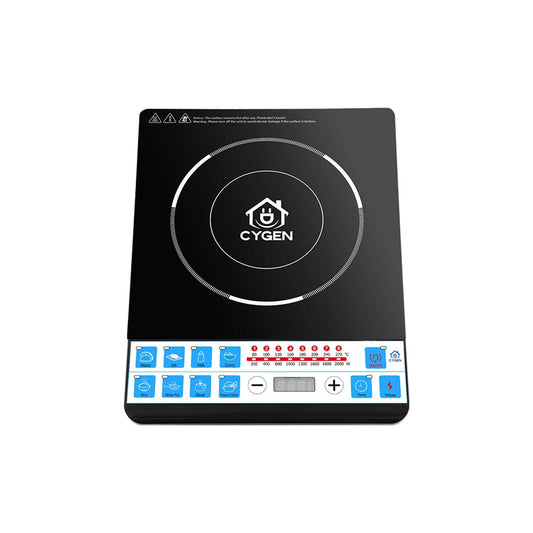
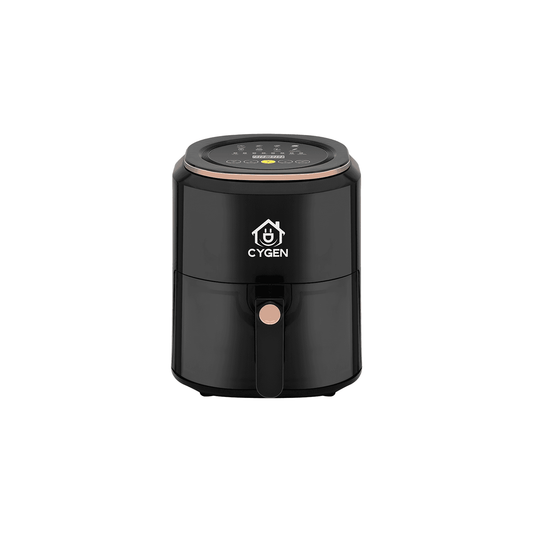
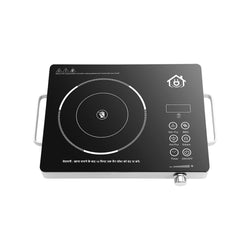
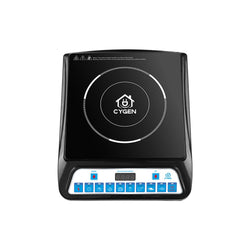
Leave a Reply
Nunc vehicula quam semper odio varius tincidunt. Vestibulum ante ipsum primis in faucibus orci luctus et ultrices posue.
Please note, comments need to be approved before they are published.